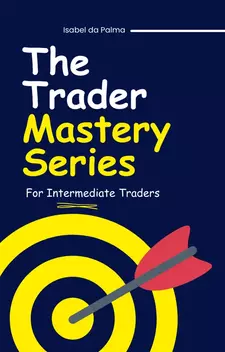Getting Started: A Beginner’s Guide to Trading
Welcome to the Essentials for Junior Traders section of our Knowledge Library. This guide is designed to help you navigate the exciting world of trading, offering foundational insights and practical advice for beginners.
Understanding the Basics of Trading
Trading involves buying and selling financial instruments, such as stocks, forex, commodities, or cryptocurrencies, to generate profits. At its core, trading is about understanding market movements and making informed decisions based on various factors. As a beginner, it's crucial to familiarize yourself with key concepts and terminology.
Choosing Your Market
One of the first decisions you will make as a trader is choosing which market to trade in. The most common markets include:
- Stock Market - Buying and selling shares of companies.
- Forex Market - Trading currencies to profit from exchange rate fluctuations.
- Commodity Market - Trading physical goods like gold, oil, and agricultural products.
- Cryptocurrency Market - Buying and selling digital currencies like Bitcoin and Ethereum.
Setting Up Your Trading Account
To start trading, you need to open a trading account with a reputable broker. Here’s how to get started:
- Research Brokers - Look for brokers that offer the markets you’re interested in and check their fees, reviews, and regulatory status.
- Open an Account - Complete the application process, which usually involves providing personal information and financial details.
- Fund Your Account - Deposit funds into your trading account to start trading.
- Download Trading Platforms - Most brokers provide access to trading platforms where you can execute trades and analyze markets.
Learning to Analyze the Markets
Successful trading requires the ability to analyze markets and make informed decisions. There are two primary types of market analysis:
Technical Analysis
Technical analysis involves studying historical price data and chart patterns to forecast future price movements. Key tools include:
- Charts - Visual representations of price movements over time.
- Indicators - Mathematical calculations based on price and volume data, such as Moving Averages and Relative Strength Index (RSI).
- Trendlines - Lines drawn on charts to identify the direction of price movements.
Fundamental Analysis
Fundamental analysis focuses on the underlying factors that influence asset prices. For example:
- Economic Indicators - Data such as GDP, unemployment rates, and inflation that impact financial markets.
- Company Reports - Financial statements and earnings reports for stocks and commodities.
- Market News - Current events and geopolitical developments that affect market conditions.
Developing a Trading Strategy
A trading strategy is a set of rules and guidelines that dictate your trading decisions. Developing a strategy involves:
- Defining Your Goals - Determine your financial objectives, risk tolerance, and trading style.
- Choosing a Trading Method - Decide whether you want to trade stocks, forex, commodities, or cryptocurrencies, and use either technical or fundamental analysis.
- Creating a Plan - Outline your trading rules, including entry and exit points, risk management, and position sizing.
- Testing Your Strategy - Use historical data or paper trading to test and refine your strategy before applying it with real money.
Managing Risks and Emotions
Effective risk management is essential for long-term success in trading. Consider the following tips:
- Use Stop-Loss Orders - Set limits to automatically close a trade at a predetermined price to minimize losses.
- Diversify Your Portfolio - Avoid putting all your capital into one asset or market to spread risk.
- Manage Your Emotions - Stay disciplined and avoid making impulsive decisions based on fear or greed.
Continuing Your Education
Trading is a continuous learning process. Stay informed about market developments, refine your skills, and adapt your strategies as needed. Utilize resources such as:
- Trading Books - Read books written by experienced traders and financial experts.
- Online Courses - Enroll in courses that offer structured learning and practical knowledge.
- Trading Forums - Join communities where you can share ideas and learn from other traders.
Final Remarks
Starting your trading journey can be both exciting and challenging. By understanding the basics, setting up your account, analyzing markets, developing a strategy, managing risks, and continuing your education, you will be well-equipped to navigate the trading world. Remember that success in trading requires patience, practice, and perseverance. Welcome to the Knowledge Library's Essentials for Junior Traders, and we wish you the best in your trading endeavors!




